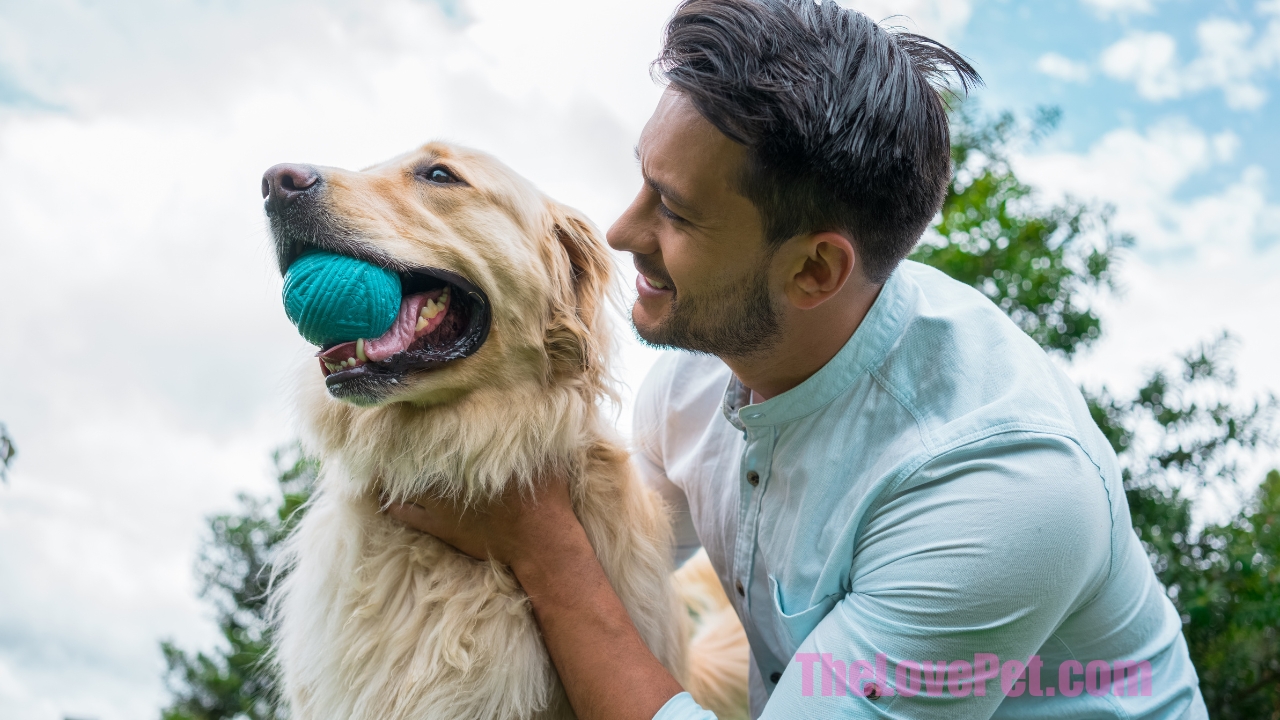Understanding How to Pet Dogs Where, When, and Why
**Questions a User Might Have:**
1. Where do dogs like to be pet?
2. How can I tell if a dog wants to be petted?
3. Why do some dogs enjoy being petted?
4. What is the right way to pet a dog?
5. Are there specific areas on a dog’s body that are generally preferred for petting?
—
**Answers to the Questions:**
1. Dogs generally enjoy being petted in various places, but it’s not so much about the “where” as it is about the manner in which you pet them. The way you pet a dog can convey different messages such as comfort, playfulness, or praise.
2. Not all dogs like to be petted, so it’s essential to ask the owner for permission before attempting to pet a dog. Even if you have permission, pay attention to the dog’s body language. If the dog pulls away or displays signs of discomfort, like lip licking, it might not want to be petted.
3. Dogs enjoy being petted because it’s a form of communication and bonding between them and their human companions. It’s a way to say “hello” and share affection. Petting a dog can also be physically pleasurable for them.
4. The right way to pet a dog is to start with a proper introduction. Always ask permission from the dog’s owner, especially if you don’t know the dog. Let the dog approach you and sniff around. If the dog’s body language is positive (soft eyes, slightly open mouth, and a wiggly body), you can slowly engage in petting.
5. While there are some general guidelines for where dogs might like to be petted, such as the chest or under the chin, every dog is different. Some dogs may have specific preferences, and it’s crucial to observe their reactions. Some areas, like the back or ears, may be sensitive or off-limits for certain dogs. Ultimately, the dog will communicate its preferences, and it’s essential to pay attention and listen with your eyes to understand what they like.
You can find the full post here
Unlocking the Secrets of Dog Petting Why, Where, and How Dogs Love Affection
**Questions a User Might Have:**
1. Why do dogs like to be petted?
2. Where do dogs like to be petted or scratched?
3. What are the benefits of petting a dog for both the dog and the owner?
4. Is it okay to scratch a dog’s belly, and why do some dogs enjoy it?
5. How should I approach petting a dog and ensure they are comfortable with it?
—
**Answers to the Questions:**
1. Dogs enjoy being petted because it has a calming and soothing effect on them. When you pet a dog, it stimulates their parasympathetic nervous system, which is responsible for “rest and digest” functions, leading to reduced stress levels. It also provides a bonding experience between dogs and their human companions.
2. Dogs have various preferred petting spots, including:
– Chest: Many dogs like having their chest, particularly the area between their front legs, scratched.
– Belly: Dogs that trust their owners may expose their bellies as an invitation for belly rubs.
– Ears: Rubbing a dog’s ears, especially the parts with cartilage, is often enjoyable and comforting.
– Below the Chin: Dogs often appreciate gentle strokes under their chin and down toward their neck.
– Around the Hips and Butt: This area, including the base of the tail, can trigger excitement and the scratch reflex in many dogs.
3. Petting a dog benefits both the dog and the owner. It stimulates chemical reactions in both, increasing serotonin and dopamine levels, which promote feelings of happiness and relaxation. For dogs, it can reduce stress by lowering cortisol levels, the stress hormone. This bonding experience enhances the relationship between dogs and their owners.
4. Scratching a dog’s belly can be enjoyable for them, especially if they trust you. When a dog lies down with its belly exposed, it’s often an invitation for belly rubs. However, it’s crucial to pay attention to the dog’s body language. Some dogs may not enjoy it, and rapid leg kicking (scratch reflex) can indicate irritation rather than enjoyment. Always observe your dog’s reaction to ensure they like it.
5. Approaching a dog for petting should be done with care and respect for their comfort. Start by signaling your intention with slow and gentle petting on the side of their face or below their chin. Once the dog is comfortable, you can gradually move to other areas like their chest, shoulders, and sides. Pay close attention to the dog’s body language, such as ears and tail positioning, to ensure they are open to being petted.
You can find the full post here
The Science of Why Dogs Love to Be Petted Understanding Where and How
**Questions a User Might Have:**
1. Why do dogs enjoy being petted?
2. Where are the best spots to pet a dog?
3. Are there areas on a dog’s body that you should avoid when petting?
4. How can you tell if a dog wants to be petted?
5. What are some important considerations before petting a dog?
—
**Answers to the Questions:**
1. Dogs enjoy being petted because it feels good to them and has a physiological benefit. When dogs and humans interact positively through petting and cuddling, both parties release oxytocin, often referred to as the “warm-and-fuzzy hormone.” Additionally, dogs are social animals, and this behavior is reminiscent of allogrooming (grooming among animals of the same species), which is common in social animals.
2. The best spots to pet a dog can vary from one dog to another as they have individual preferences. Some common sweet spots include areas that dogs can’t easily reach on their own and where they don’t feel vulnerable. Potential spots include under the chin, on the rump, shoulders, and chest. Some dogs may also enjoy having their ears scratched. It’s essential to let the dog’s behavior guide you in discovering their preferred petting spots.
3. It’s generally a good idea to avoid petting or grabbing certain areas of a dog’s body, including the tail, feet, legs, head, and ears. Dogs are protective of these sensitive body parts, and their reaction can vary depending on their comfort level. For example, hovering a hand or object over a dog’s head can make them feel threatened or stressed. Pay attention to the dog’s cues; if it retreats, it may not want to be petted in that area, while if it returns for more, it’s likely enjoying the attention.
4. Before petting a dog, it’s crucial to assess the dog’s body language. Even if the dog’s owner says it’s friendly and enjoys being petted, take the time to observe the dog’s behavior. Look for signs of stress or discomfort, such as growling, barking, or retreating. If the dog seems relaxed, has soft body language, and approaches you willingly, it’s likely open to being petted.
5. There are several considerations to keep in mind before petting a dog:
– **Assess the dog’s body language:** Before approaching, observe the dog’s behavior to ensure it’s comfortable with interaction.
– **Respect personal space:** Allow the dog to approach you first, rather than imposing yourself on the dog.
– **Start gently:** When petting, begin with slow and gentle strokes, typically in areas like under the chin or on the chest.
– **Pay attention to cues:** If the dog shows signs of discomfort or disinterest, respect its boundaries and stop petting.
– **Avoid sensitive areas:** Steer clear of sensitive areas like the head, ears, or tail unless you’re certain the dog is comfortable with it.
You can find the full post here
Navigating Dog Etiquette How to Safely Approach and Pet Dogs
**Questions a User Might Have:**
1. How should you approach and pet a dog you don’t know?
2. Where and how should you pet a dog to ensure they enjoy it?
3. When should you avoid petting a dog, even if it’s your own?
4. What are the signs of aggression in a dog, and when should you avoid approaching them?
5. What are the signs of anxiety in a dog, and how can you help them feel more comfortable?
—
**Answers to the Questions:**
1. When approaching and petting a dog you don’t know, the key is to seek permission from the dog’s owner. Always ask the pet parent if it’s okay to pet their dog. Allow the dog to approach you first, and if it displays relaxed body language, such as a soft face and eyes, you can gently pet its shoulder or chest. Avoid reaching over the dog’s head, looming over it, or staring. Pay attention to the dog’s cues; if it doesn’t approach on its own or seems unsure, it’s best to admire the dog from a distance.
2. Where and how to pet a dog depends on the individual dog’s preferences. Many dogs enjoy being petted on the chest and shoulders. For initial interactions, stick to soft pets, not pats, on the back and chest. As the dog becomes more familiar with you, you can try scratching the head and ears or giving belly rubs. However, always pet for 3–5 seconds, pause to gauge the dog’s reaction, and continue if it’s enjoying the attention.
3. It’s crucial to avoid petting a dog, even if it’s your own, when its body language indicates anxiety, fear, threat, or aggression. Dogs communicate primarily through body language, and understanding their cues is essential for safety. Signs of anxiety include making themselves look smaller, crouching, lowering the head, licking lips, tail between legs, and avoiding eye contact. Signs of aggression include trying to appear bigger, raised fur, straight-legged stance, staring, growling, and barking. When a dog displays such signs, it’s best to give them space to prevent potential harm.
4. Signs of aggression in a dog include trying to appear larger (raised ears, puffed fur), a stiff and straight-legged stance, staring, moving toward a perceived threat, baring teeth, growling, lunging, and barking. When a dog exhibits aggressive behavior, it’s essential to avoid approaching them. Continuing to approach a dog displaying these signs could lead to a dangerous situation.
5. Signs of anxiety in a dog include making themselves appear smaller (crouching), lowering the head, repetitive lip licking, tail between the legs, flattened ears, yawning, hiding, snarling, or biting. Anxious dogs might also avoid eye contact, lie still, or expose their stomach in fear. When approaching a dog showing signs of anxiety or fear, it’s best to give them space and demonstrate that you’re not a threat. Avoid making sudden movements or loud noises that could escalate their anxiety.
You can find the full post here
Understanding Your Dog’s Preferences Where, Why, and How to Pet Them
**Questions:**
1. Where do dogs like to be petted the most?
2. Why do dogs enjoy being petted?
3. Should you pet a sleeping dog?
4. What are some places to avoid when petting your dog?
5. Why do some dogs hate being petted?
**Answers:**
1. **Where do dogs like to be petted the most?**
– Dogs have specific spots they enjoy being petted. Some of the best spots include under the chin, the chest, the belly, the side of the neck, the shoulder, and the back. However, it’s important to remember that each dog is unique, so it’s essential to observe their preferences and body language to determine their favorite petting spots. Avoid areas like the face, tail, genitals, and legs, as most dogs are sensitive in these areas.
2. **Why do dogs enjoy being petted?**
– Dogs enjoy being petted because it’s a form of affection and bonding. When dogs are petted properly, they release oxytocin, the “love hormone,” which strengthens the bond between dogs and humans. It feels good to them and helps them relax. Petting can also be a way to reward good behavior and show appreciation to your furry friend.
3. **Should you pet a sleeping dog?**
– It’s generally best to let a sleeping dog rest peacefully. Waking up a sleeping dog by petting them can startle them, leading to potential aggression. If you wish to encourage your dog to sleep or rest more, you can gently stroke them into a more relaxed state. However, it’s crucial to observe their response and leave them to sleep if they prefer.
4. **What are some places to avoid when petting your dog?**
– Avoid petting sensitive areas on a dog, including the face, tail, genitals, and legs. Most dogs are uncomfortable with petting in these areas, and it can lead to avoidance or even aggression. Always respect your dog’s boundaries and focus on the spots they enjoy, such as under the chin, the chest, the belly, the side of the neck, the shoulder, and the back.
5. **Why do some dogs hate being petted?**
– Some dogs may dislike being petted due to various reasons. It could be related to their upbringing, past experiences of abuse or pain, a medical condition causing discomfort, or incorrect petting techniques. Dogs that are new to their environment may also be nervous and hesitant to be petted until they establish trust and familiarity. Understanding your dog’s history and preferences is essential for ensuring they feel comfortable and safe during petting.
You can find the full post here









